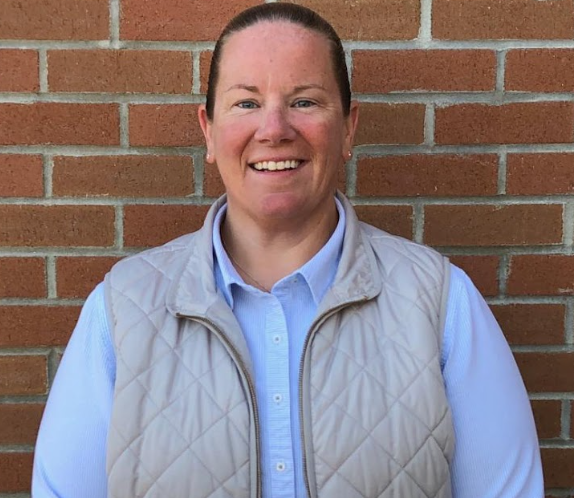Revealing the Truth About Domestic Violence
May 10, 2017
Domestic violence does not get the attention it needs to spread awareness and help its victims. Domestic violence affects many people despite attempts to spread awareness. Domestic violence affects all ages and can include children, women, and men. It can happen to anyone of any race, age, sexual orientation, level of education, socioeconomic background, religion, or gender. It is not only associated with people who are married, but can also include people who are dating or living together.
The first step to understanding domestic violence is to know how it is defined. According to the New York City Police Department, domestic violence is defined as a pattern of abusive behavior in any relationship and the behavior is used to gain and maintain power over another person. The violence can be physical, sexual, emotional, financial, or psychological actions or threats that cause fear in another person. Behaviors can include intimation, manipulation, humiliation, isolation, frightening, terrorizing, coercion, threatening, blaming, hurting, injuring, or wounding another person.
To understand the different acts or threats of violence in their various forms it is essential to define them. Physical abuse can be described as hitting, slapping, shoving, grabbing, pinching, biting, hair pulling, etc. Sexual abuse is defined as forcing or attempting to force any sexual contact or behavior on another person without their permission. Emotional abuse can be described as damaging another person’s self-esteem or self-worth. This can be accomplished by constantly criticizing them, name-calling, putting down their abilities or capabilities, or destroying their relationship with their child/children.
Financial abuse can be outlined as making or attempting to make another person rely on you for financially security. This can be done by controlling all the money, denying them access to money, denying them the ability to go to school to further their education, and/or not allowing them to be gainfully employed. Psychological abuse can take many forms. Some forms include threatening that can involve the individual, the children, extended family members, and friends, destruction of property, hurting or threatening to hurt pets, intimidation, and isolation (not allowing for friendships, school, work, time with family, etc.).
Once the different forms of domestic violence are understood, it is possible to understand the effects, which do more than just impact the life of the targeted victim. It also effects the significant people in the victim’s life such as family members, children, friends, colleagues, witnesses like neighbors, and the community as a whole. If children are raised in a home where domestic violence is taking place, they are prone to have social and physical problems. The frightening part is that it also teaches them that this behavior is “normal” and acceptable. Their chances of becoming a victim of domestic violence or an abuser in a relationship increases due to this prolonged exposure.
There is a cycle to abuse that is considered to contribute to how a person can get stuck in this situation without thinking there is a way out. There is the honeymoon phase, the tension building phase, and the explosive, dangerous phase. Like all cycles, the three phrases repeat over and over again. That is what makes it a pattern. In most cases, it does not stop without intervention and most likely even escalates. In the tension phase, stress and pressure from everyday life including money, kids, or work increase the strain on the relationship. When the tension rises, verbal abuse will usually begin at this point. The victim will try to please by giving in or avoiding situations around abuse. The victim does not understand that these actions will not stop the next phase. When tension hits its highest point, physical abuse begins.
The explosive, dangerous phase is typically set off by a specific event or by the abuser’s mental state. It is not because of the victim’s behavior even though they are made to feel and believe that it is their fault. The abuser’s behavior is unpredictable in nature and cannot be controlled by the victim; however, sometimes without knowing a victim could move things along to the explosive phase because of a desire to get to the honeymoon phase. In the honeymoon phase, the abuser is embarrassed of their behavior, expresses remorse, and/or blames the victim to rationalize it. Behaviors that often follow after this in this phase include being extra kind, helpful, loving, generous, and even apologetic. They seem convincing to the victim that it won’t happen again and this makes the victim feel like the relationship can work so they stop considering getting out of the relationship. Unfortunately, the cycle continues and the tension rises again, the abuse happens again, and the victim is sucked back in again to believing the abuser is sorry and it won’t happen again. It’s like a roller coaster ride that you cannot get off of or ask to stop the ride when scared.
So how can a victim get help and what kind of help is available? If a victim of domestic violence is in imminent danger, law enforcement who are trained to deal with this type of heightened situation should be called for assistance. In many cases, they recommend separating from each in that moment by one person leaving the house for safety reasons. If there are physical signs of assault or it is evident that a felony was committed, criminal charges can be pressed and an arrest can be made.
A victim of domestic violence also has the right to seek out an Order of Protection through the judicial system. When it is granted, the abuser cannot come without a certain distance written on the Order of Protection without facing charges.
If a victim is seeking advice or feeling vulnerable, there is a domestic violence hotline that they can call. For individuals living in New York State, in order to get the hotline number of their local domestic violence program, they would call the New York State Domestic and Sexual Violence Hotline at 1-800-942-6906. There is also very helpful information and resources on www.opvd.ny.gov for victims of domestic or sexual abuse. Another hotline number for help with domestic violence is 800-621–HOPE (4673). This hotline is 24 hours a day, 365 days a year. It offers crisis counseling, safety planning, assistance finding shelter, and information about resources.
Shelters are available to victims of domestic violence and sometimes a phone call can be that first step to safety. In New York, Safe Horizons offers safety shelters to victims of domestic violence. Their shelters are confidential and provide a safe, comfortable, nurturing environment to the victim and other affected family members. The shelters give those living in a dangerous situation a safe, nonjudgmental place to heal. Their rooms are fully furnished and they have eight shelters. The shelters are short term as they also provide counseling, planning, building life skills, helping with housing assistance and finding employment, legal consultation and temporary child care.
The Safe Horizons contact number is 800-621-HOPE. When a victim is ready to take a step towards help, these are some of the options available to them and with awareness a victim can find hope in a situation that seemed hopeless. Spreading awareness is important and essential. Last month, I made flyers providing hotline numbers for domestic violence victims and was pleasantly surprised that over 30 stores of all different types let me hang a flyer in their window or on their door. Hopefully, someone who needed it, saw it and started to feel hope.
Domestic violence does not discriminate. It can affect anyone at any point in their life. Spreading awareness and having accessible information and resources is crucial. As a society, we can make a change by spreading awareness, recognizing the signs in someone that may need help, and continuing to expand and fund the necessary resources to bring hope to those who feel they are trapped in a hopeless and helpless situation. Domestic violence is unacceptable and change begins with us as a society recognizing that it exists and spreading awareness, information, and available resources.











